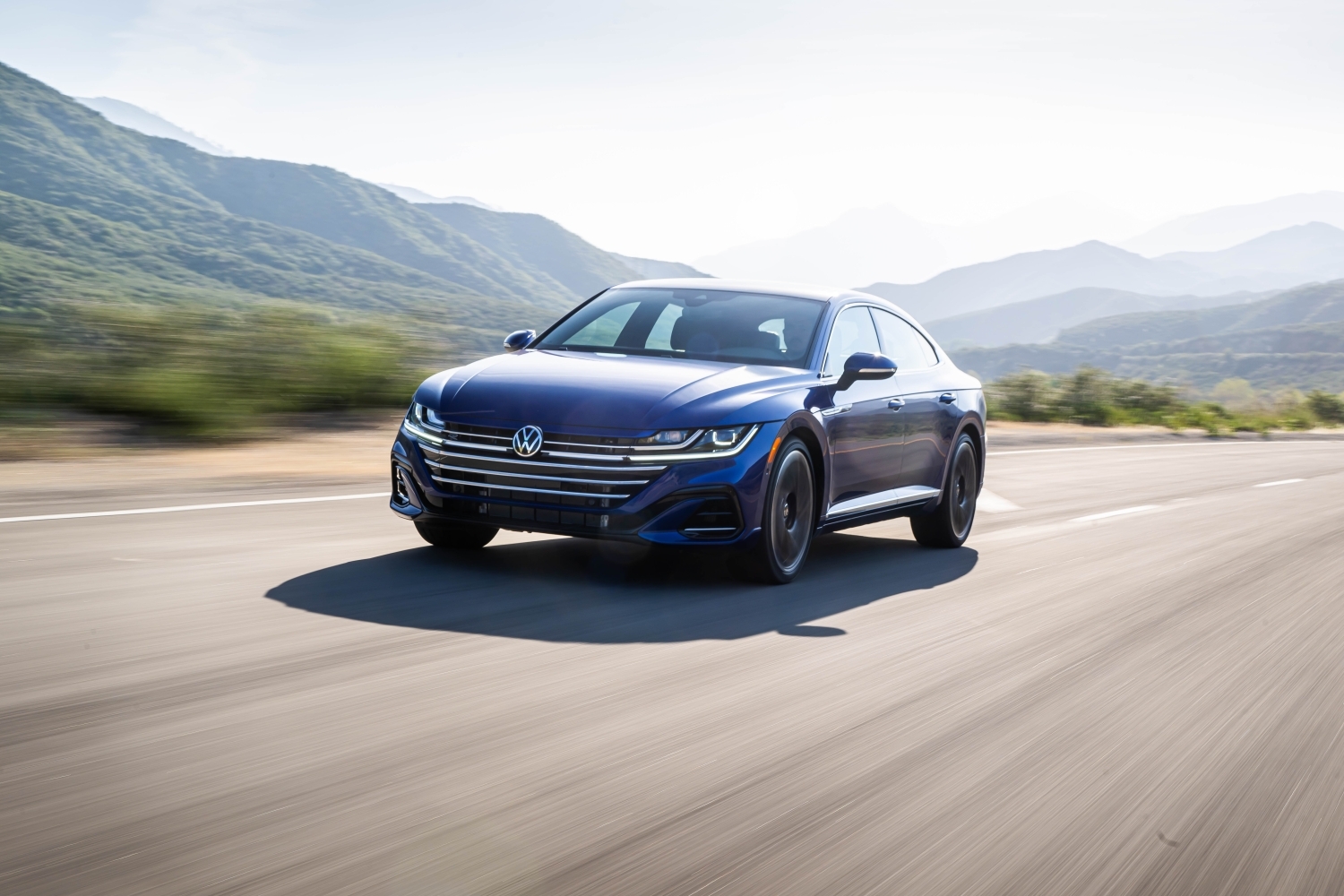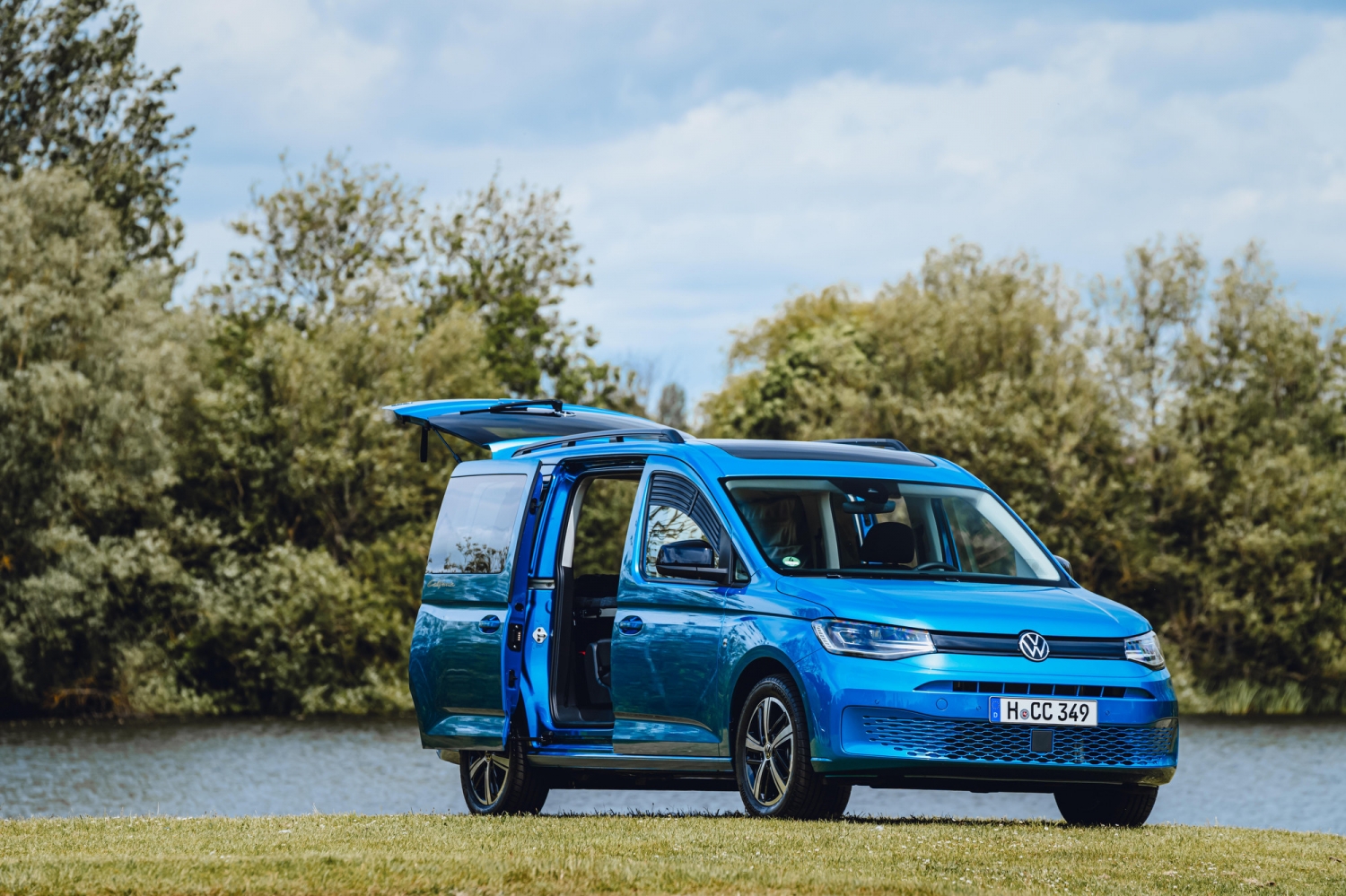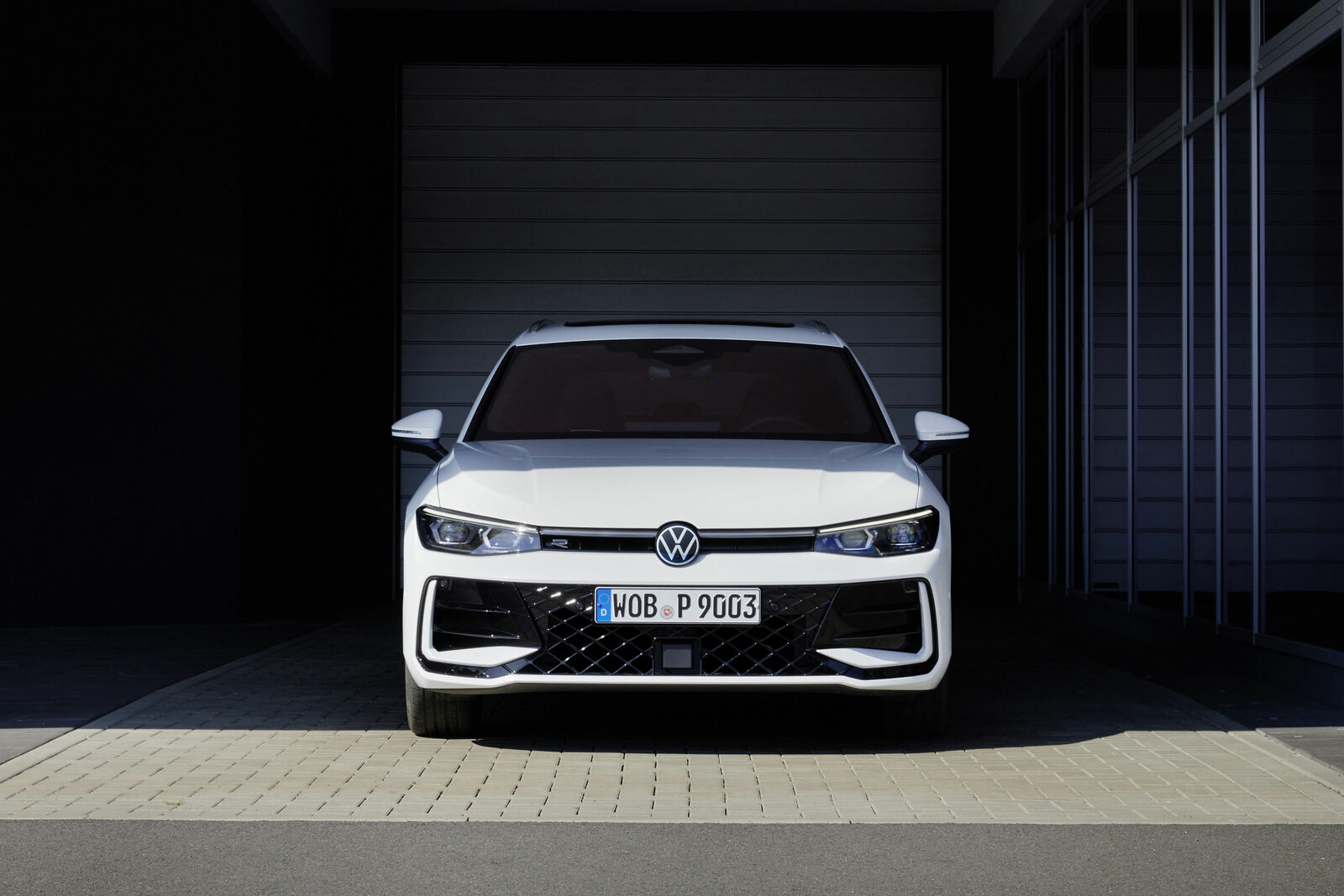The 2022 Volkswagen Golf successfully builds on its past legacy. Whether you choose the Golf Variant 2.0 TDI or the Golf R Variant, it’s hard to go wrong. And that’s one of the main reasons the Golf has always scored points.
Indeed, it’s hard to find fault with the latest version of this iconic model. Don’t worry, they’re there – but they’re by no means fundamental.
What Volkswagen Golf 2022 reviews agree on
Fiercely sporty look
The new Golf will catch your eye at first sight. Its sharply cut features give it a dynamic look, and its headlights, complete with LED daytime running lights, show its technological advancement.
In the centre of the dashboard you have a huge touchscreen infotainment system with intuitive controls and a host of great features, but the display is also waiting for you in the instrument panel. The Active Info Display system is very handy, although its steering wheel controls are slightly confusing. But it’s still one of the many optional extras that are worthwhile.
While the front seats offer plenty of comfort, great lateral guidance and the option of heating, the rear ones boast plenty of space in all directions. Countless storage spaces are available across the entire car. The large cargo area also offers a number of clever solutions, including folding the seats from the boot, a 12V socket or the ability to divide the storage space with a floor mat.
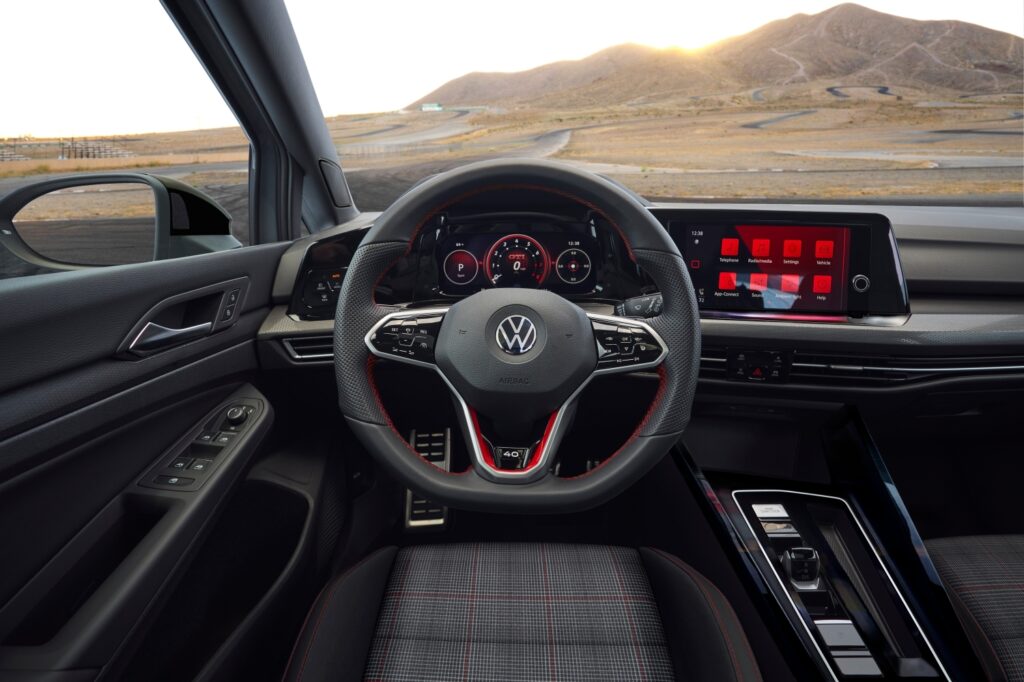
Higher trim level not worth it
The car can be fitted with cool features, including illuminated door handles, panoramic sunroof, tri-zone air conditioning, heated steering wheel and seats and much more. But the catch is – with all the extra equipment, the car will set you back more than much bigger and roomier cars, such as the Skoda Superb Combi.
Satisfactory engines to choose from
The 110kW 2.0 TDI four-cylinder diesel engine mated to a seven-speed DSG gearbox works brilliantly. The car has plenty of power and consumption can be kept around 5.5l/100km. In the cabin, the engine is well soundproofed and practically unnoticeable even at highway speeds.
The optional DCC adaptive chassis can even filter through rutted third-class roads in comfort mode, while in sport mode it’s pleasantly stiff and gives a feeling of confidence in every corner.
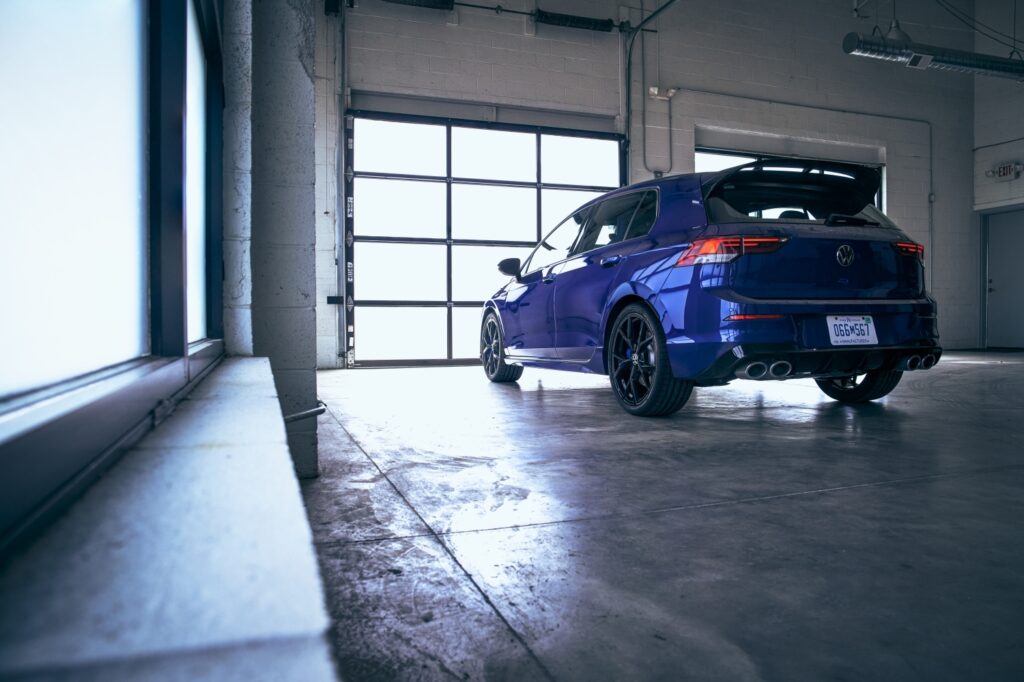
Volkswagen Golf 2022 in numbers
- Max Power: 235 kW
- Price: 52-54 000 EUR
- Consumption: 5,8-7,8 l/100 km
- Boot space: 605-1620 l
- Curb weight: 1200-1500 kg
- Height: 1456-1483 mm
- Width: 1789 mm
- Length: 4284-4644 mm
- Wheelbase: 2629 mm
Detailed Volkswagen Golf history
1st VW Golf generation (1974-1983)
The first VW Golf saw the light of day in 1974 and the arrival of the first generation was by no means easy. The Golf had to build on the phenomenal success of the Beetle, which had sold over 21 million units by 1973 alone. Its technology was based on the components that Ferdinand Porsche had given it before the Second World War, while the newcomer was to have front-wheel drive, following the example of Audi and rival brands.
The design was entrusted to Giorgio Giugiaro and his compact and boxy design was a success. As early as October 1976, Volkswagen reaped one million Golf sales. In addition, at the same time, the carmaker introduced the Golf GTI, equipped with a 1.6-litre 110 hp engine, which gave birth to an entire automotive segment. By the 1980s, the Golf was sold on every continent and the brand continued to expand its model range. Both a convertible and a sedan appeared. The Golf I sold 6.72 million units.
2nd VW Golf generation (1983-1991)
The second generation was launched in 1983. A year later, NOx-reducing catalytic converters were introduced, followed two years later by ABS, power steering and an all-wheel drive system. Volkswagen flirted with electric and hybrid versions for a while, but due to a range of just 50 km and a hefty price tag, production was cancelled after a year. With 210 hp and a 0-100 km/h acceleration time of 7.2 sec, the Golf GTI G60 Limited became the most powerful model in the range.
3rd VW Golf generation (1991-1997)
The new Golf III, which arrived on the market in August 1991, had grown in size compared to its predecessor. In length, it even surpassed the four-metre mark. In 1994 a combi variant was introduced and even a convertible. The third generation boasted with side airbags, fuel injection on diesel engines and ABS as a part of a standard trim. But with only 4.8 million sold units the profits did not reach the level Volkswagen had hoped for.
4th VW Golf generation (1997-2003)
The brand commissioned designer Harmut Warkuss to develop the fourth generation, introduced in 1997. Dimensions have grown to almost 4.2 metres, and for the first time Volkswagen has used a platform that has underpinned other cars in the group – the Audi A3, Seat Leon and Skoda Octavia – in addition to the Golf. In addition, it was the first Golf to feature galvanised bodywork.
The cabin became more spacious and, more importantly, of higher quality, even competing with higher class cars. In addition, head airbags, electronic traction control, direct fuel injection for petrol engines, Haldex all-wheel drive, satellite navigation and xenon headlights were introduced.
A six-speed manual gearbox also arrived, while the R32 was the first to use the DSG dual-clutch automatic. It was a world premiere and as a result Volkswagen faced unexpected interest, which meant that sales had to be extended outside Germany. However, overall sales of the Golf IV fell again to 4.3 million units.
5th VW Golf generation (2003-2009)
With the PQ35 platform, the fifth generation introduced in 2003 managed to solve all the handling problems for which the Golf IV was criticised. A big throwback to the first generation was the Golf GTI with a turbocharged 200bhp two-litre and, above all, an eye-catching upholstery with a traditional checkered pattern. But apart from that, the fifth generation also introduced the 1.4 TSI engine, which was doped with both a turbocharger and a supercharger, and arrived with bi-xenon headlights, a seven-speed DSG automatic and a panoramic sunroof.
The Golf GTI with a turbocharged 200bhp two-litre and, above all, an eye-catching upholstery with a traditional checkered pattern, was a big throwback to the first generation. Also, there was a Golf Plus with a raised roofline that used unique body panels, although it sat on the same platform. However, sales of 3.27 million units were not what VW was used to from earlier.
6th VW Golf generation (2008-2012)
Volkswagen therefore rushed to introduce a successor, which was unveiled at the 2008 Paris Motor Show. With a four-year selling period, it lasted the least of all Golfs. After all, it was rather a massive facelift than a new model, as the PQ35 platform was still under the floor.
Volkswagen has, however, made significant improvements to the interior. And the laser-welded body received five stars in Euro NCAP crash tests, while the Golf BlueMotion boasted low fuel consumption and emissions – just 99 grams of CO2 per kilometre.
There was also a GTI version celebrating the 35th anniversary of the original Golf. The engine power was increased to 235 hp and the 0-100 km/h dropped to 6.6 seconds. In addition, the brand offered a myriad of turbodiesels, manual or automatic transmissions, recuperation, DCC adaptive chassis, parking assist, cornering headlights and start-stop system.
7th VW Golf generation (2013-2020)
The seventh generation, reigning from 2013-2020, offered two rear axle versions. From the start, it was powered by the TSI petrol engines from the EA211 series, which far outperform the TSI engines of the 5th and 6th generations. In the 7th generation, Volkswagen has managed to eliminate the fatal flaws of previous generations while maintaining excellent ergonomics and low loss in value.
Interesting Volkswagen Golf reviews:
VW Golf 2023 review with pricing and specifications
Exhaustive Volkswagen Golf 2022 WhatCar review
